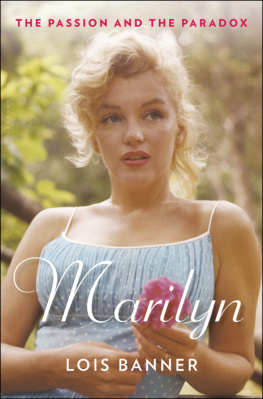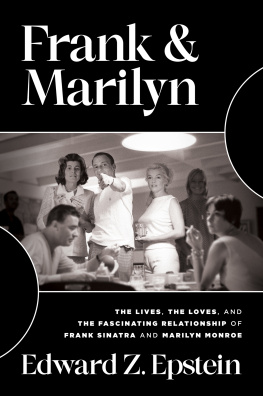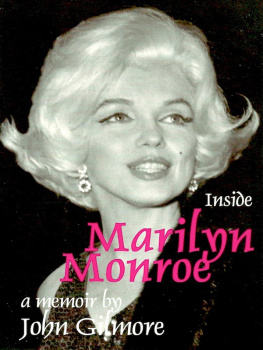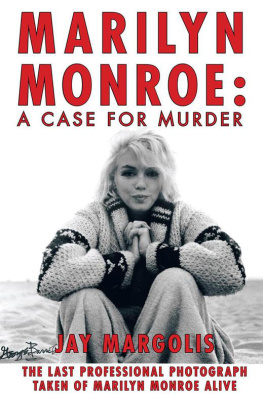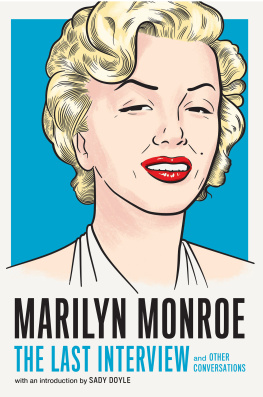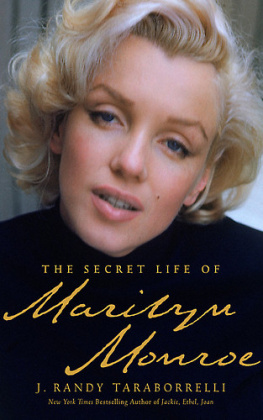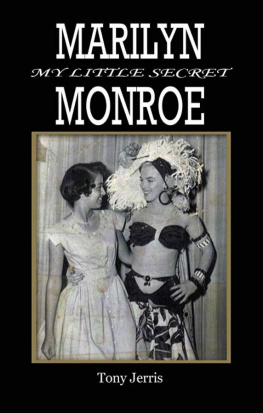Women in Modern America: A Brief History
Elizabeth Cady Stanton: A Radical for Womens Rights
American Beauty: A Social History Through Two Centuries of the American Idea, Ideal, and Image of the Beautiful Woman
Finding Fran: History and Memory in the Lives of Two Women
In Full Flower: Aging Women, Power, and Sexuality
Intertwined Lives: Margaret Mead, Ruth Benedict, and Their Circle
MMPersonal (with Mark Anderson)
Marilyn
The Passion and the Paradox
Lois Banner

Copyright 2012 by Lois Banner
This electronic edition published July 2012
All rights reserved. You may not copy, distribute, transmit, reproduce or otherwise make available this publication (or any part of it) in any form, or by any means (including without limitation electronic, digital, optical, mechanical, photocopying, printing, recording or otherwise), without the prior written permission of the publisher. Any person who does any unauthorised act in relation to this publication may be liable to criminal prosecution and civil claims for damages
Marilyn Monroe photographs by Milton H. Greene are previously registered
and are protected by copyright law and are subject to a separate license
agreement. They require separate written permission from The Archives, LLC
or Joshua Greene, 2610 Kingwood Street, Suite #3, Florence, Oregon, 97439.
541-997-5331.
Published by Bloomsbury USA, New York
LIBRARY OF CONGRESS CATALOGING-IN-PUBLICATION DATA
Banner, Lois W.
Marilyn: the passion and the paradox / Lois Banner.1st U.S. ed.
p. cm.
ISBN 978-1-60819-760-6 (ebook)
1. Monroe, Marilyn, 19261962. 2. Motion picture actors and actresses
United StatesBiography. I. Title.
PN2287.M69B3425 2012
791.43028092dc23
[B]
2012002395
First U.S. Edition 2012
www.bloomsburyusa.com
To: Stacy Eubank, Mark Anderson, and
Greg Schreiner, with thanks and love.
Contents

Marilyn on subway grate; photo shoot for The Seven Year Itch, September 15, 1954. Photo by Sam Shaw.
Prologue
Let Us Now Praise Famous Women
In one of the most famous photos of the twentieth century, Marilyn Monroe stands on a subway grate, trying to hold her skirt down as a gust of wind blows it up, exposing her underpants. The photo was taken in New York on September 15, 1954, in a photo shoot during the filming of The Seven Year Itch, which stars Marilyn as a model and dog-faced Tom Ewell as a middled-aged editor of raunchy books who is tired of his seven-year marriage and yearns for an affair with a sexy girl. In the scene being shot, they leave a movie theater after seeing The Creature from the Black Lagoon, a 1954 film about a prehistoric Gil-man on the Amazon River who kills several members of the expedition sent to capture him. Its a hot summer night, and Marilyn stands over the grate to cool off. A subway passing underneath supposedly produces the wind, which was actually caused by a wind machine under the grate.
In her white dress, white underpants, white high-heel sling-backs, and white earrings, Marilyn is a vision in white, suggesting innocence and purity. Yet she exudes sexuality and transcends it; poses for the male gaze and confronts it. Her billowing skirt resembles wings. She might be a guardian angel from the Christian tradition, an Aphrodite from the classical tradition, or a Nike proclaiming victory in poetry or war, like the Winged Victory of Samothrace in the Louvre Museum, with the wind blowing back Victorys wings and chiton. She might be an elegant ballerina on her toes or a working girl standing on the Coney Island fun house ramp, where air gusts blew up the skirts of the women on the ramp. Sam Above all, The Seven Year Itch photo reveals Marilyns complexities: her passion and her paradoxical nature, central themes of this book.
The photo shoot was a publicity stunt, one of the greatest in the history of film. Its time and location were published in New York newspapers; it attracted a crowd of over a hundred male photographers and 1,500 male spectators, even though it was held in the middle of the night to avoid daytime crowds. Klieg lights lit the scene; spectators climbed to the roofs of buildings to get a good view; photographers elbowed their way through the crowd to stake out the best locations. Sam Shaw, the stills photographer for the movie, took the famous photo, but the other photographers there shot hundreds of variations. So great was the interest in all things Marilyn that barricades were put up, and police were on hand to contain the crowd.
Billy Wilder, the films director, did fourteen takespausing between them to let the photographers shoot. Every time Marilyns skirt blew up, the crowd roared, especially those up front, who could see a dark blotch of pubic hair through her underpants, even though she had put on two pairs of pants to conceal it. The draconian 1934 Motion Picture Production Code, enforced by the Production Board, forbade such a display. Any blotch of public hair in photos from the shoot had to be airbrushed out.
Yet the scene in the shoot is naughty, with the phallic subway train, its blast of air, and Marilyns erotic stance. Yet she is in control. She is the woman on top, drawing from the metaphor for womens power that runs through Euro-American history. She poses for the male gaze, but she is an unruly womanthe Mere Folle of medieval Carnivale; the white witch with supernatural powers; the burlesque star in an upside-down world of enormous, powerful women and powerless, victimized men. In the photo Marilyn is so gorgeous, so glamorous, so incandescentas her third husband, the writer Arthur Miller, described herthat she seems every inch a star, glorying in her success.up and revealed her underpants. She had, indeed, dramatized her childhood dream of walking naked over a church congregation, lying on their backs, eyes wide open, looking up at her. Its a powerful dream of exposureand of a Marilyn in control.
But she holds down her skirt in the photo, suggesting modesty. In her only discussion of the shootin a 1962 interviewshe stated that she wasnt thinking about sex when she posed, only about having a good time. It was the spectators, she claimed, who sexualized her. At first it was all innocent and fun, Marilyn said, but when Billy Wilder kept shooting the scene over and over again the crowd of men kept on applauding and shouting, More, more Marilynlets see more. Then Billy bought the camera in close, focusing on her crotch. What was supposed to be a fun scene turned into a sex scene. With her wry humor, Marilyn added I hope all those extra takes are not for your Hollywood friends to enjoy at a private party.
We are not accustomed to seeing Marilyn Monroe as being on top in any but the most superficial way. We view her as irreparably damaged, too victimized to have played much of a role either in launching her career or reinventing herself on the silver screen. Nothing could be farther from the truth. The Marilyn that emerges in Marilyn: The Passion and the Paradox is a woman who made herself into a star, conquering numerous disabilities in the process, creating a life more dramatic than any role she played in films. Her disabilities were many. She suffered from dyslexia and from a stutter more severe than anyone has realized. She was plagued throughout her life by dreams of monsters and witches, horrible dreams that contributed to her constant insomnia and that I am the first to describe. She was bipolar and often disassociated from reality. She endured terrible pain during menstruation because she had endometriosis, a hormonal condition that causes tissue like growths throughout the abdominal cavity. She broke out in rashes and hives and eventually came down with chronic colitis, enduring abdominal pain and nausea.
Next page
